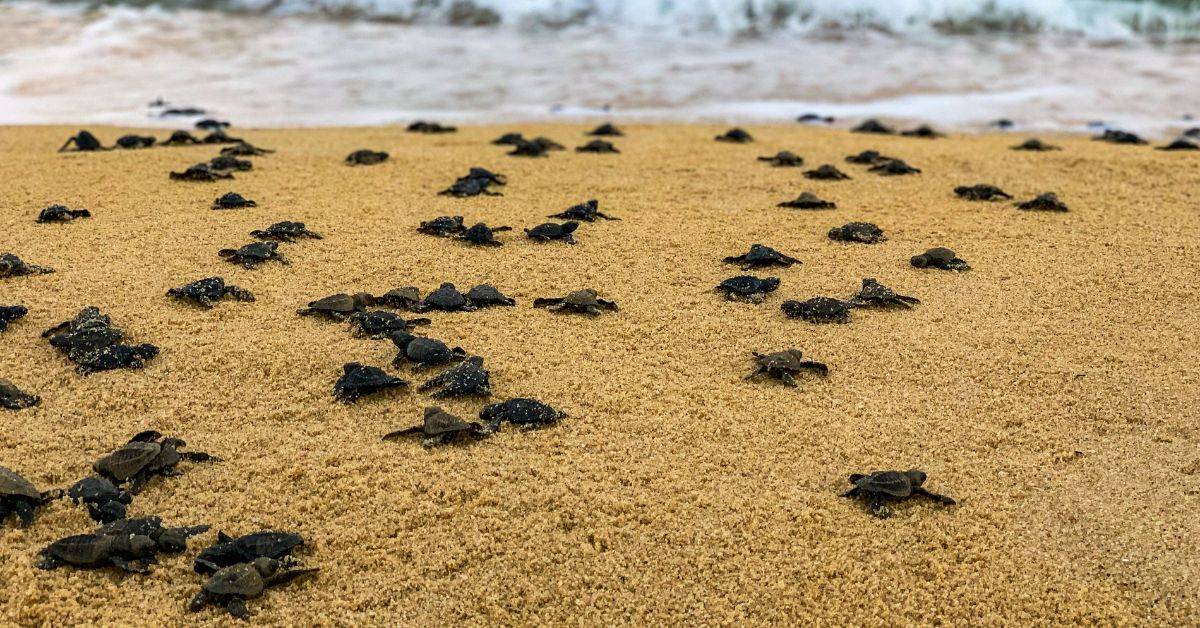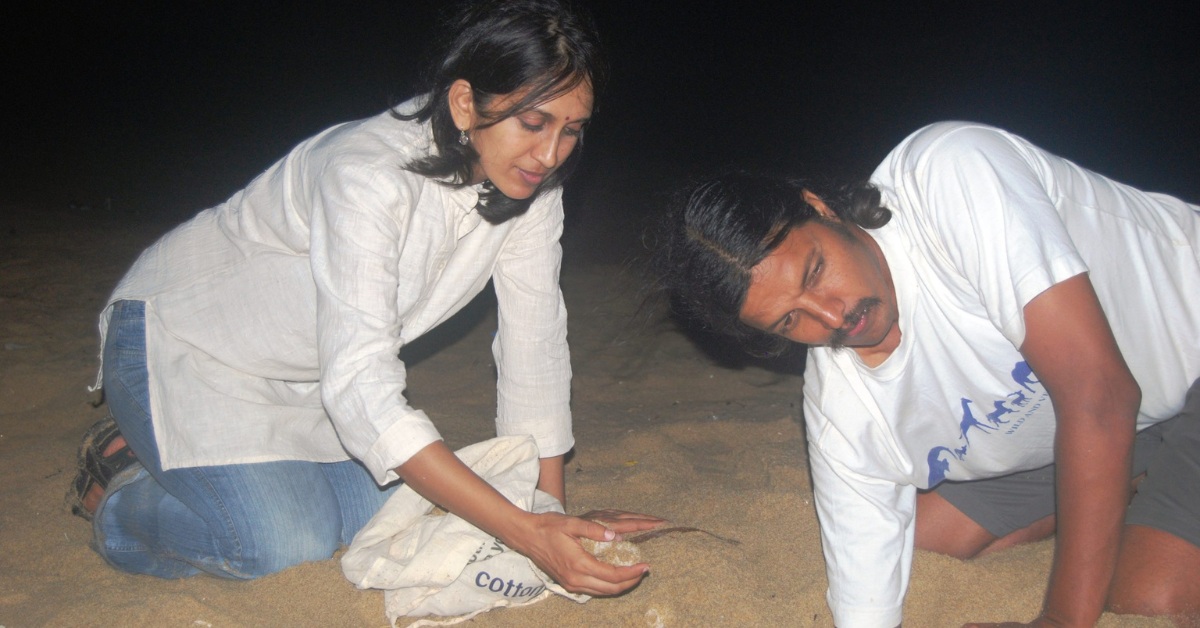5 Simple Ways You Can Help Protect Olive Ridley Turtles This Nesting Season
The olive ridley turtle, the smallest and most abundant of all sea turtles, graces India’s eastern coastlines during its nesting season from January to April. These ancient mariners, existing for over 120 million years, now face numerous threats that endanger their survival.
As citizens, our collective efforts can significantly contribute to their protection. Here are five simple yet impactful ways you can help safeguard olive ridley turtles this nesting season:
1. Keep beaches clean
Litter on beaches poses severe risks to turtles, both adults and hatchlings. Debris can obstruct nesting sites and entangle turtles, leading to injuries or fatalities. “Sometimes the trash gets buried in the sand, and when the turtles lay eggs in the nest, they get prone to ants, which is a threat,” shares Akila, a coordinator at Students’ Sea Turtle Conservation Network (SSTCN).
By ensuring that we leave no trash behind during our beach visits, we create a safer environment for these creatures. Participating in local beach clean-up drives further amplifies this positive impact.
2. Minimise light pollution
Bright lights along the shoreline can disorient nesting turtles and emerging hatchlings, leading them away from the ocean and increasing their vulnerability to predators. “People get excited and use flashlights while clicking pictures of the hatchling during release, which distracts the hatchlings and makes them move towards the land,” shares Nishfa Sherin, a volunteer at SSTCN.
 The tiny hatchlings tend to get distracted by the bright light. Picture credits: Canva.
The tiny hatchlings tend to get distracted by the bright light. Picture credits: Canva.
If you reside near or visit nesting beaches, consider reducing outdoor lighting. During turtle walks or when observing these creatures, avoid using flash photography or flashlights, as sudden illumination can disturb them.
3. Maintain a respectful distance
Encountering a nesting turtle is a remarkable experience, but it’s crucial to observe from afar. Approaching too closely can cause stress, potentially leading the turtle to abandon her nesting attempt. Always allow turtles ample space and avoid making loud noises or sudden movements that might startle them.
4. Support sustainable fishing practices
By choosing to purchase seafood from sources that employ sustainable fishing methods, you contribute to reducing bycatch, a significant threat to olive ridley turtles. This way, you also have the opportunity to support our local fishing communities. Advocating for and supporting policies that promote responsible fishing can lead to broader systemic changes benefiting marine life.
5. Engage with conservation organisations
Volunteering with groups dedicated to turtle conservation offers hands-on opportunities to make a difference. In Chennai, the Students’ Sea Turtle Conservation Network (SSTCN) has been active since 1987, focusing on the preservation of olive ridley turtles.
 SSTCN has been involved in turtle conservation for over three decades. Image credits: SSTCN.
SSTCN has been involved in turtle conservation for over three decades. Image credits: SSTCN.
They conduct nightly patrols to protect nesting sites and relocate eggs to safer hatcheries. Public participation is encouraged, especially during their public turtle walks. These walks, typically held on Friday and Saturday nights, begin with an informative session on conservation, followed by a guided beach walk from around 11 pm to the early morning hours.
To register or learn more, visit their official website or contact them via email at sstcnchennai@gmail.com.
By adopting these practices and spreading awareness within our communities, we can collectively ensure that olive ridley turtles continue their ancient nesting rituals on our shores for generations to come.
Edited by Leila Badyari Castelino.
News